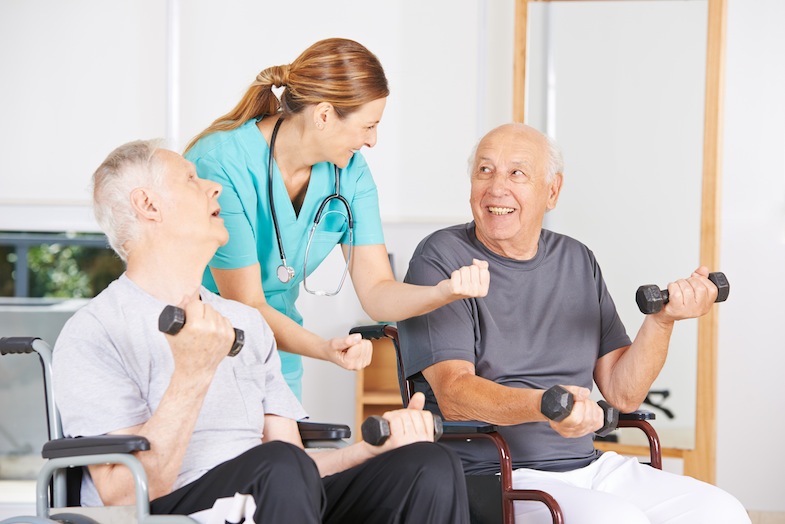The barriers to physical activity for the disable can be a challenge to overcome. There are strategies that can be used to help disabled people participate in physical activity. These strategies can include: knowing what limitations exist for the disabled, creating a physical activity program that is accessible for the disabled, and understanding the health benefits of physical activity for the disabled.
Barriers to disabled people’s participation in physical activity
Physical activity is difficult for those with disabilities. Accessibility for wheelchairs and difficulty accessing fitness centers are two of the biggest barriers to physical activity for the disabled. Another barrier is the lack of accessible classes. Although physical activity is essential for good health and well-being, it can be difficult for those with disabilities to engage in this activity. Some barriers to physical activity can be avoided by making the environment more accessible.
Another barrier to disabled people engaging in physical activity is lack of transportation. Often, physical activities can be costly, and limited public transport can be prohibitive. However, physical activity is beneficial for the individual, the community, and society. However, barriers to physical activity can also hinder the disabled from getting the most out of their lives.
Physical activity for children can be hindered by a lack of information or lack of understanding. Many of these obstacles are social or personal in nature. Sometimes, the views of parents and children with disabilities are not always in agreement. For example, children with disabilities may not participate in sports as often as children without disabilities, and this can lead to a negative attitude toward disability. In addition, the lack of appropriate facilities, inadequate transportation, and limited programmed capacity can also be major barriers. Fortunately, the sport and recreation industry is uniquely positioned to address these barriers.
Lack of time is another barrier to physical activity. These obstacles can be overcome by monitoring your daily activities for a week. Identify at least three 30-minute times when you can get out of the house and exercise. You can also try walking or riding your bicycle to work or to school. You should choose activities that take as little time as possible. In addition, explain your interest in physical activity to your friends and family. Encourage them to join you.
People with stroke are less likely to engage in physical activity than the general population. The sedentary lifestyles of stroke survivors can lead directly to functional decline. Insufficient exercise can also hinder the ability to transfer walking skills that were learned during rehabilitation. Lack of physical activity can also limit participation in community events, work, and recreation.
Social barriers often prevent people from participating in physical activity. Children’s interest in exercise can be hindered by social stereotypes and lack of acceptance from peers. Contact theory has shown that knowledge about a person with disabilities can change attitudes and encourage participation. Positive encouragement and one-on-1 instruction can help build confidence. Looking for best disability service in melbourne?
Physical activity is vital for children with disabilities. Participation in sports and other activities can help children with disabilities feel included in the community and build confidence. It can help them to get along with their peers, and make new friends with people who have similar abilities. Physical activity is important for everyone. However, children with disabilities are less likely to engage in physical activity than their able-bodied peers.
Facilitators of physical activity for disabled
There are a number of barriers that prevent children and youth with disabilities from participating in physical activity. The Barriers to Physical Activity for Children and Youth with Disabilities Study was created to identify these barriers and to explore the experiences of youth with disabilities. The researchers surveyed parents, therapists, service providers, and community partners to understand the barriers that prevent these youths from participating in physical activity. The researchers found that perceived health benefits are not the primary motivation for participation in physical activity. Rather, the barriers were associated with other factors.
Barriers and facilitators to participation in physical activity were found in both studies. These results indicate that certain factors can facilitate participation by people with disabilities in physical activities. However, a systematic review of these issues is needed to determine how to address them. It is essential to understand the barriers and facilitators so that appropriate programs and facilities can be developed.
Health benefits of physical activity for disabled
People with disabilities can avoid many health problems by engaging in physical activity. Even moderate exercise can improve overall health. It can be difficult for people with disabilities, however, to get active on a regular basis. The key is to find a way to incorporate moderate exercise into their daily routine. Starting out slowly with short sessions and increasing intensity gradually will help make the transition easier and increase the chances of success.
Individuals with disabilities are less likely to engage in moderate exercise than the general population when it comes to exercising. One survey found that 25 percent of people with disabilities reported being physically inactive during a typical week. Only 12.8% of people without disabilities reported being physically inactive. However, exercise is a great way to improve general health for people of all sizes and abilities.
In addition to improving physical health, regular physical activity can improve the mental state of disabled people. It can lower anxiety and depression symptoms, and increase self-esteem. It also promotes social interactions, which can help disabled people feel more confident and connected. Participating in group activities is a great way for people to meet and build a sense of community.
Although any type of exercise is good, it is best to get at least 150 minutes of aerobic exercise each week. Ideally, this should include muscle-strengthening activities at least two times per week. These activities should be done under the supervision of a qualified physician.
Another benefit of physical activity is that it helps improve sleep. Disabled individuals who regularly engage in disability sports report better quality sleep. Physical activity is not only energy-intensive, but also mentally demanding. Physical activity requires quick decision-making and concentration, both of which are necessary for good mental health. Moreover, people who engage in disability sport enjoy longer periods of deep sleep, which improves cardiac health and improves immune function. Furthermore, exercise releases endorphins which reduce stress hormones and improves sleep quality.
It has been long known that physical activity for disabled people has many health benefits. In addition to improving mental health, it improves muscle strength, energy, and stamina. This exercise also reduces the risk of diabetes, certain cancers, and early death. Physical activity can also help people with disabilities maintain independence and improve their daily living activities.
Physical activity is also beneficial for children with disabilities. Exercise improves their mental and physical development, improves self-esteem, and promotes social interaction. It can also improve social skills, which can help children living with disabilities live an independent, fulfilling life.
Also Read:
How to increase your Brand Awareness?




